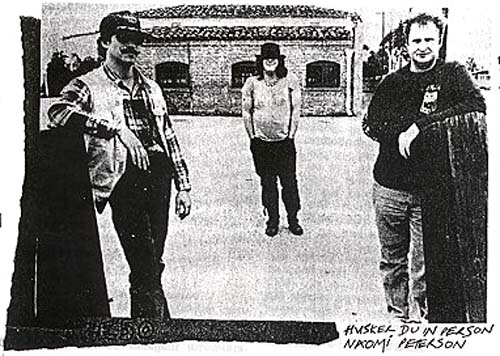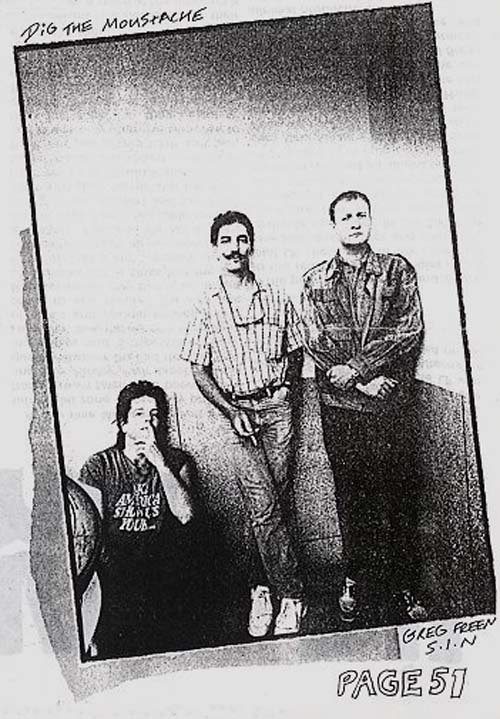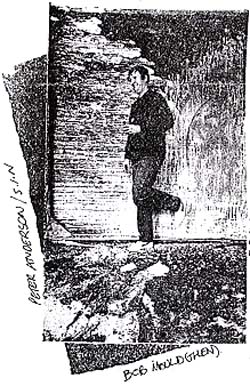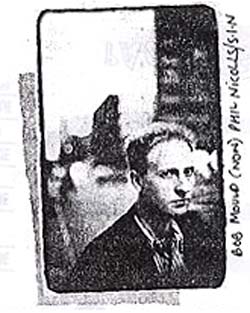
In January 1987 came the sad and altogether surprising news: Husker Du, one of the American underground's top bands through out the mid-eighties had come to an acrimonious and sudden end. To describe Husker Du's demise as creatively premature does not tackle the sheer disappointment many felt when their legacy came to completion following their happy sad statement Warehouse: Songs And Stories. It seemed tht nothing was impossible and then it was all abruptly and shockingly over.
Husker Du originated from Minneapolis in Minnesota, a State of freezing cold winters and steaming hot summers. The band's nucleus was formed when Grant Hart and Bob Mould found they had much in common musically while working at a local record store1. Bob had spent his youth indiscriminately collecting singles and was a self-confessed Byrds and Beatles fanatic. With musical common ground established they endeavoured to start a band and recruited Greg Norton on bass to complete their classic three piece line-up in late 1979.
At the time Minneapolis was a cultural dead zone whose only previous homegrown talent had been Prince and the Paisley Park
The record is a document of their live show as it stood at the time and is of bootleg quality only. Many of the tracks just disintegrate into a disjointed mess and the band were naturally sloppy and haphazard on stage. Only the menacing Data Control really hints at their potential. Land Speed Record is definitely one for the completists only. The LP was given a UK release on Alternative Tentacles and was
IN A FREE LAND
The period between '82 and '83 led to the release of three singles and a mini LP. These records are extremely rare and sought after and were only available as imports in the UK. First came the two singles Statues and Amusement released by Reflex, a local Minnesota independent. Then the band released an almost unheard of 7" called In A Free Land on their own New Alliance2 label. Finally came Everything Falls Apart once again on Reflex. The mini LP showed something of the possibilities the Huskers would later offer despite the fact that they had yet to master the studio. Songs like Erase Today3 and Bricklayer are tightly played with harmony vocals augmenting the sparse and minimal production.
Following the success of Everything Falls Apart Husker Du were given the opportunity to be produced by Spot of Black Flag fame at the Redondo Beach Studios, just outside LA. This resulted in the groundbreaking Metal Circus EP. Here the Huskers live attack was finally transferred to vinyl. Tracks like Real World and Lifeline overflowing with energy and aggression. Best cut goes to Diane, a tale of rape and murder whose repeated chorus transforms from 'Diane' to 'dying' as the true nature of the lyric unfolds. This 12" EP was originally released on Reflex4 but was later licensed to SST for national distribution. Interestingly, the covers of the cassette and vinyl releases are mirror images of each other.5
Cover versions of classic songs by Punk bands are often a disappointment but Husker Du's 1984 single 8 Miles High took the laid back melodies of the Byrds original and added vitriolic guitar plus eighties paranoia to create a Psychedelic masterpiece. The result was included in the Top 10 singles of 1984 by the New York Times and the 7" was heralded universally
Continued >>



 acoustically
engineered tracks coupled gentle steel stringed folk guitar with jagged edged
lead and layer upon layer of harmony vocals sung with passion. Songs like
Wishing Well, Brazilia Crossed With Trenton, and Whichever Way
The Wind Blows simply surge with feeling and pathos while See A
Little Light is a perfect radio friendly pop song. The most important
song is Poison Years where Mould purges himself of his
Husker Du past.
acoustically
engineered tracks coupled gentle steel stringed folk guitar with jagged edged
lead and layer upon layer of harmony vocals sung with passion. Songs like
Wishing Well, Brazilia Crossed With Trenton, and Whichever Way
The Wind Blows simply surge with feeling and pathos while See A
Little Light is a perfect radio friendly pop song. The most important
song is Poison Years where Mould purges himself of his
Husker Du past.